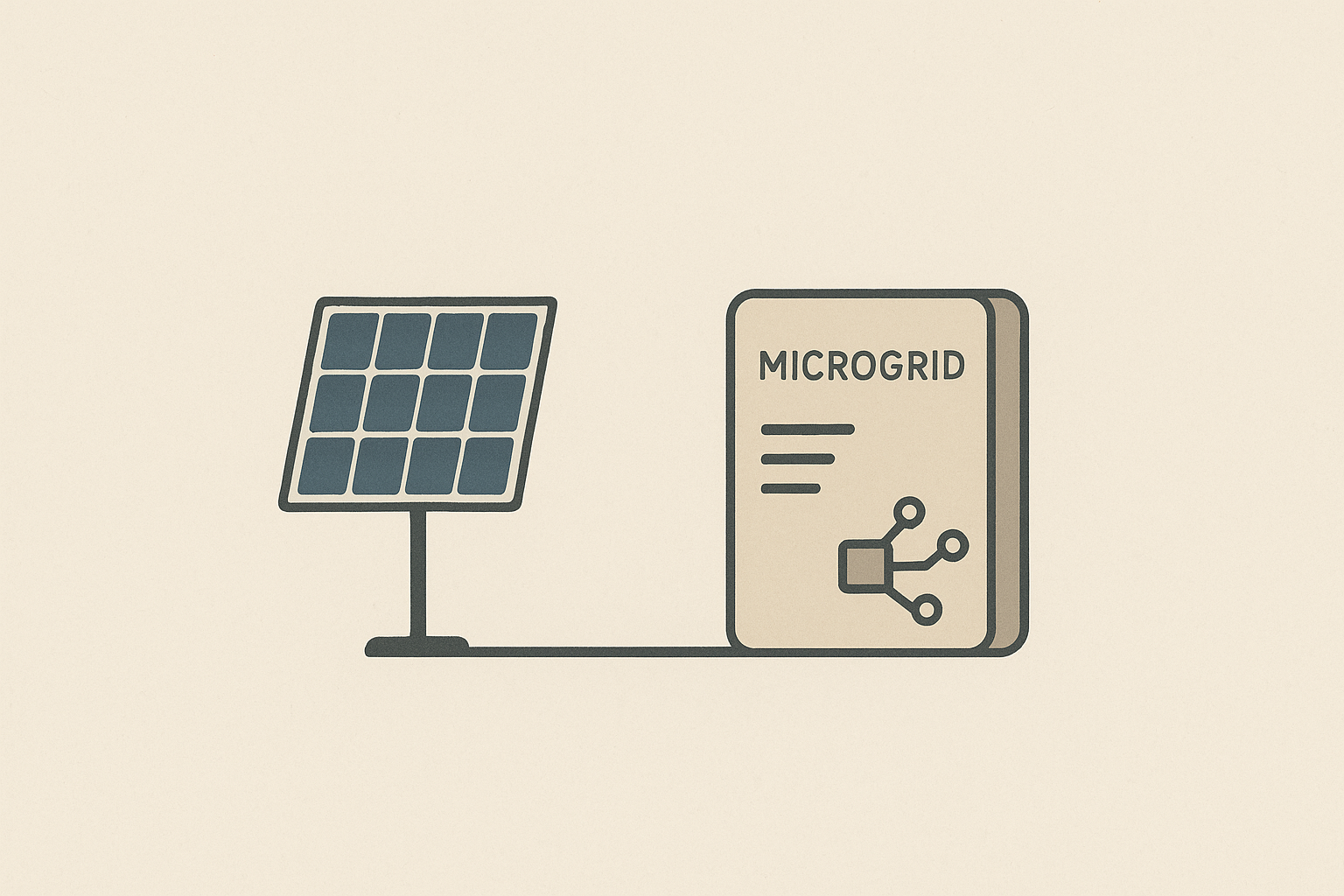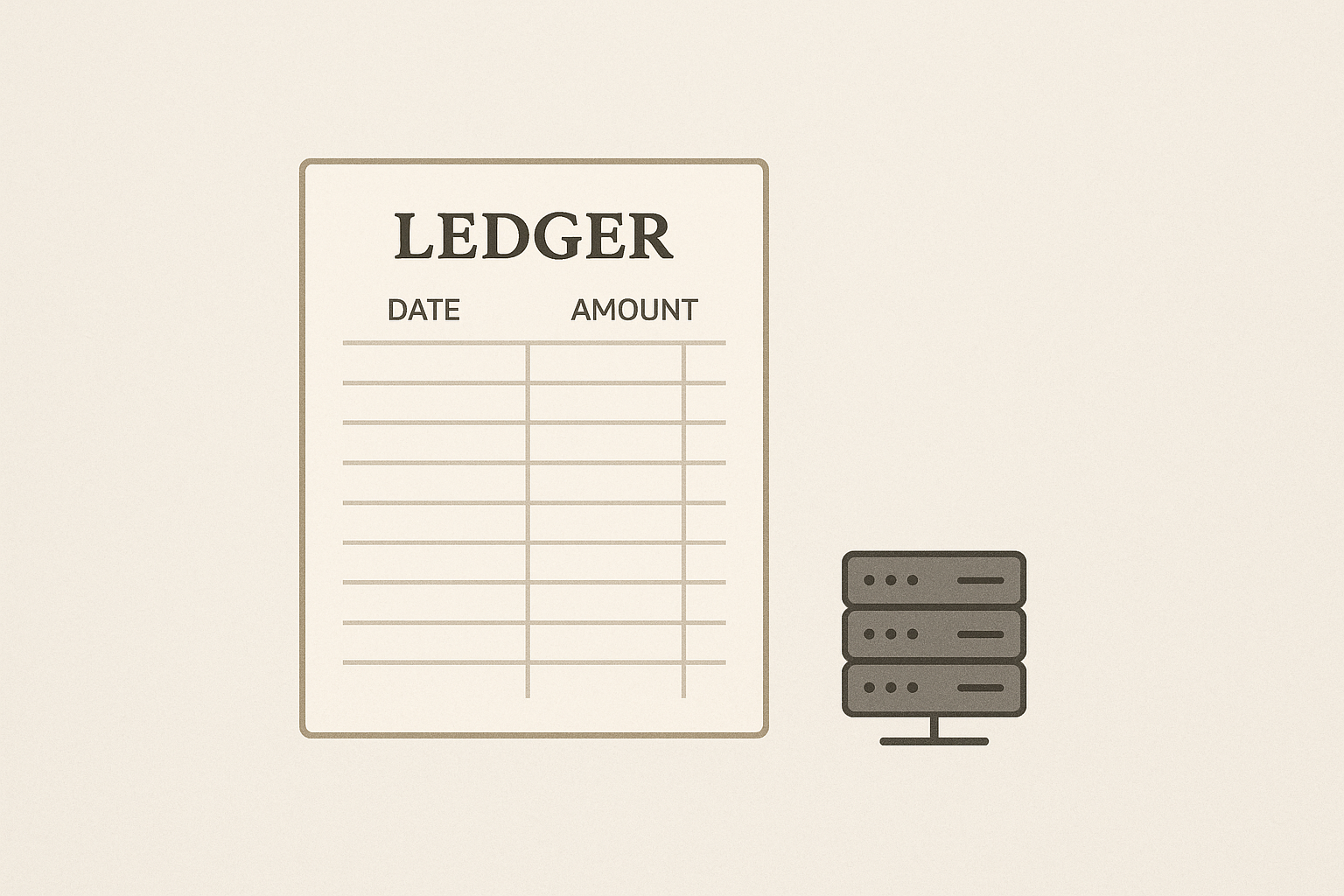Operational Resilience for Edge AI in Remote Renewable and Agricultural Systems
Design resilient edge AI systems that operate reliably off-grid, scale sustainably, and support viable business models for renewables and precision agriculture.

The Evergreen Challenge
Remote renewable energy installations and field-scale agricultural systems increasingly depend on local intelligence, from predictive control of microgrids to pest and disease detection at field edges. These systems share a persistent, practical problem, not a passing trend: how to build edge AI and automation platforms that remain reliable, maintainable and commercially viable when deployed in off-grid, harsh, connectivity-constrained environments.
This briefing defines a durable operational resilience framework, and provides two complementary, future-proof solutions. One is a technical stack and engineering approach for resilient edge AI; the other is a sustainable business and operational model that converts technical resilience into long-term value for operators and vendors. Each solution includes step-by-step implementation guidance. A full, production-ready example is included, with an edge inference pipeline code sample designed for long life cycles and secure model updates.
Did You Know?
Edge devices placed on remote renewable or agricultural sites commonly experience intermittent connectivity and power interruptions; designing for graceful degradation is not optional, it is foundational to system reliability.
Why This Is Evergreen
Network reliability, constrained field power, physical exposure and long maintenance cycles will not vanish as technology advances. Instead, devices will be expected to do more locally, for longer, and with fewer visits from engineers. A resilient architecture and a business model that supports scheduled maintenance, remote observability and outcomes-based payments will remain valuable for years.
Solution A: The Resilient Edge AI Stack (Technical Framework)
Overview: Build modularity at every layer, use defensive programming and design for asynchronous, eventual consistency. The core principles are redundancy, observability, secure update mechanisms and explicit fallback behaviours.
Principles and Components
- Hardware modularity: pick components with field-replaceable modules, standard interfaces and local diagnostics.
- Energy-aware operation: adaptive duty cycles, dynamic quality-of-service for ML inference based on battery state, and harvest-aware scheduling where solar or wind charge is present.
- Containerised edge services: use lightweight containers or process supervisors so components can be restarted independently.
- Local data contracts: clear versioned schemas and data lifetimes; enforce data retention policies locally.
- Secure, atomic updates: signed artifacts, delta updates, and safe rollback strategies.
- Progressive model degradation: quantify confidence and degrade gracefully (for example, stop non-essential processes at low battery; switch to heuristic rules when models are stale).
- Telemetry-first design: small, meaningful metrics and heartbeat signals that fit intermittent networks.
Step-by-step Implementation
- Define site reliability targets, for example Mean Time Between Site Visits (MTBSV) and acceptable model staleness.
- Select hardware that supports watchdog timers, process isolation and local storage encryption.
- Design the software as composable services, each with a small memory footprint and a clear health API.
- Implement a local orchestrator or supervisor to manage restarts and enforce resource limits.
- Create a model lifecycle pipeline that supports lightweight binary deltas, signature verification, and atomic swaps.
- Implement telemetry aggregation that buffers locally and transmits minimal summaries when connectivity is available.
- Define fallback heuristics for each model-driven function and test failure modes in simulation and on-site.
Code Example: Containerised Edge Inference with Safe Updates
The following example is a production-oriented, minimal edge pipeline using Python. It demonstrates an inference service that performs local health checks, pulls signed model deltas from a remote store, verifies signatures, applies atomic model swaps and exposes a simple HTTP health endpoint. The example focuses on durability and upgrade safety rather than advanced model details. Use this as a template for integrating into your edge orchestrator.
#!/usr/bin/env python3
"""
Edge inference service, minimal example
Features:
- Local model loading with atomic swap
- Signed model verification (ed25519 example)
- Health endpoint for supervisor
- Telemetry heartbeat file dump
"""
import os
import time
import json
import hashlib
import requests
from pathlib import Path
from flask import Flask, jsonify
import ed25519
# Configuration (in real deployments read from secure env or config file)
MODEL_DIR = Path('/var/edge/models')
ACTIVE_MODEL = MODEL_DIR / 'active'
STAGING_MODEL = MODEL_DIR / 'staging'
SIGNATURE_STORE = MODEL_DIR / 'signatures'
PUBLIC_KEY_PATH = MODEL_DIR / 'pubkey.pem'
TELEMETRY_PATH = Path('/var/edge/telemetry.json')
MASTER_SERVER = 'https://updates.example.com/edge'
HEARTBEAT_INTERVAL = 60 # seconds
app = Flask(__name__)
# Simple in-memory health
health_state = {'uptime': 0, 'last_heartbeat': None, 'model_version': None}
# Utility functions
def verify_signature(file_path, sig_path, pubkey_path):
with open(file_path, 'rb') as f:
data = f.read()
with open(sig_path, 'rb') as s:
sig = s.read()
with open(pubkey_path, 'rb') as p:
vk = ed25519.VerifyingKey(p)
try:
vk.verify(sig, data)
return True
except ed25519.BadSignatureError:
return False
def atomic_swap(staging, active):
# move file into place atomically
tmp = active.with_suffix('.tmp')
os.replace(staging, tmp)
os.replace(tmp, active)
def fetch_update():
# Simplified fetch logic: get metadata, then download if new
try:
r = requests.get(f"{MASTER_SERVER}/latest.json", timeout=10)
r.raise_for_status()
meta = r.json()
except Exception as e:
return None
version = meta.get('version')
if version == health_state.get('model_version'):
return None
model_url = meta.get('model_url')
sig_url = meta.get('sig_url')
try:
m = requests.get(model_url, timeout=30)
s = requests.get(sig_url, timeout=10)
STAGING_MODEL.write_bytes(m.content)
SIGNATURE_STORE.write_bytes(s.content)
return version
except Exception:
# cleanup partial files
if STAGING_MODEL.exists():
STAGING_MODEL.unlink()
return None
def load_model(active_path):
# Placeholder; in reality load pytorch/tf or optimized runtime
if not active_path.exists():
return None
with open(active_path, 'rb') as f:
return hashlib.sha256(f.read()).hexdigest()
@app.route('/health')
def health():
return jsonify(health_state)
def heartbeat_loop():
start = time.time()
while True:
try:
health_state['uptime'] = int(time.time() - start)
# attempt fetch and update if connectivity available
new_version = fetch_update()
if new_version:
sig_path = SIGNATURE_STORE
if verify_signature(STAGING_MODEL, sig_path, PUBLIC_KEY_PATH):
try:
atomic_swap(STAGING_MODEL, ACTIVE_MODEL)
health_state['model_version'] = new_version
except Exception as e:
# rollback or move to quarantine
pass
else:
# signature failure, remove staging
STAGING_MODEL.unlink(missing_ok=True)
SIGNATURE_STORE.unlink(missing_ok=True)
# update telemetry snapshot
telemetry = {'time': int(time.time()), 'model_version': health_state.get('model_version')}
TELEMETRY_PATH.write_text(json.dumps(telemetry))
health_state['last_heartbeat'] = telemetry['time']
except Exception:
# do not crash the loop; log locally
pass
time.sleep(HEARTBEAT_INTERVAL)
if __name__ == '__main__':
# Ensure directories exist
MODEL_DIR.mkdir(parents=True, exist_ok=True)
# Start heartbeat loop in background thread
import threading
t = threading.Thread(target=heartbeat_loop, daemon=True)
t.start()
app.run(host='0.0.0.0', port=8080)
Notes on production hardening:
- Run the service under a process supervisor that enforces memory and CPU limits.
- Use a secure key manager for public keys; rotate keys on a known schedule and include versioning metadata with every model.
- Implement delta updates to reduce bandwidth; use binary diff formats and apply integrity checks at each stage.
- Build a simulated failure testbed that reproduces intermittent power and network conditions; verify fallback heuristics behave as intended.
Testing and Validation
Unit-test model swap, signature verification and restart behaviour. Create integration tests that mimic low-bandwidth, high-latency and no-network states. Record behaviour metrics and define SLOs around model freshness, inference latency and telemetry delivery.
Solution B: Sustainable Business and Operational Models
Technical resilience only pays if it is paired with a business model that funds maintenance and aligns incentives between vendors, operators and end customers. The following are two durable commercial approaches that adapt to market shifts.
Model 1: Hardware-as-a-Service with Outcomes-Based Add-ons
Structure: The vendor supplies edge hardware and the resilience software stack as a managed service. The customer pays a recurring fee that covers hardware amortisation, remote monitoring, secure updates and a defined number of site visits per year. Outcomes-based add-ons are priced for specific improvements, for example increased energy yield, reduced pesticide use or reduced diesel backup consumption.
Revenue and cost blueprint:
- Upfront capital: subsidise a portion of hardware cost, recover via monthly fees over 36 to 60 months.
- Base subscription: cover remote monitoring, secure update service and a limited warranty.
- Outcomes fee: measured by agreed KPIs, for example additional kWh generated or reduced yield loss, paid quarterly.
- Field service SLA: define tiers with different MTBSV and guaranteed response times; price them by access difficulty and site density.
Advantages: predictable revenue, aligned incentives, simplifies procurement for customers. Risks: requires reliable measurement of outcomes, clear dispute resolution and careful SLA design.
Model 2: Hybrid Marketplace and Data Cooperative
Structure: A platform model where device manufacturers, data service providers and local operators participate. Core resilience software is open or licensed permissively; the platform charges for certified add-ons, premium telemetry feeds and marketplace transactions. Operators can join a cooperative to pool maintenance resources for geographic clusters.
Revenue levers:
- Certification fees for third-party hardware or models, incentivising interoperability and resilience standards.
- Data subscriptions, anonymised and aggregated, to utilities and service providers who buy high-quality field data for planning.
- Operational pooling: membership fees for cooperative access to scheduled maintenance crews and spare parts inventory.
Advantages: scales via ecosystem effects, spreads maintenance costs, promotes standardisation. Risks: requires governance and strong data privacy and IP rules.
Step-by-step Business Implementation
- Define the minimum viable offering: base subscription, simple hardware warranty, basic telemetry and scheduled update service.
- Run a pilot with clear KPIs and measurement protocols; instrument systems to prove value with objective metrics.
- Design SLAs and outcomes metrics that can be audited; use cryptographic evidence where necessary for billing (signed telemetry snapshots, time-bound proofs).
- Build a pricing model with scenario analysis for churn, ARPU and expected field service costs. Conservatively estimate site visit frequency and parts failure rates.
- Scale via regional partners; standardise spare parts and maintenance procedures to reduce per-visit cost.
Financial Sensitivity Example
Use conservative assumptions: median hardware cost 2,000 GBP, expected warranty-driven replacements 5% per year, base subscription 40 GBP/month, outcomes bonus 10 GBP/month on average. Over a 5-year life cycle, ensure subscription revenue plus outcomes covers hardware amortisation, support staff and logistics, with margin for R&D and continuous improvement.
Combining Technical and Business Frameworks
Technical resilience reduces the frequency and cost of field visits. The business model must capture these savings and convert them into recurring revenue or competitive advantage. For example, predictable telemetry and secure update mechanisms lower operating costs for vendors, allowing lower subscription prices that make adoption easier for customers.
Pro Tip: Instrument the smallest, most meaningful metric set locally. Heartbeats, model version, battery state, and a single problem flag are often worth more than verbose logs that never reach the server.
Operational Playbook: From Prototype to Long-Term Deployment
- Design for maintainability from day one: use replaceable modules, standard connectors and clear field diagnostics.
- Start with a single, clear value proposition; demonstrate measurable benefits in pilot phase.
- Invest in remote observability and automated anomaly detection that triggers well-defined runbooks for remote fixes before a site visit is required.
- Create a spare parts inventory and route optimisation to reduce average visit cost; consider local stocking hubs for regional clusters.
- Implement lifecycle management for models and firmware, including scheduled reviews and sunset policies for deprecated models.
Standards, Interoperability and Long-term Risk Management
To extend the lifetime of deployed systems, adopt open protocols where possible and versioned APIs for telemetry, model metadata and control interfaces. That avoids vendor lock-in and allows components to be replaced over time. Consider offering a documented fallback mode that operates without cloud access, reducing risk of total service loss.
Reference: The UK government has sustained commitments to net-zero planning and distributed energy resources; align architecture and business cases with national energy policy and grid codes where relevant to preserve market access and compliance (gov.uk net-zero strategy).
Q&A: How should I price outcomes that depend on weather or seasonal variation? Use baseline-adjusted KPIs. Establish historical baselines, and pay bonuses only for improvement against those baselines, with weather normalisation methods agreed in the contract.
Risk Register and Long-term Caveats
Warning: Do not underestimate logistical complexity. Field operations, customs, spare parts, and regional certifications create ongoing fixed costs. Overly optimistic projections of remote fixes will degrade margins.
Maintain a focused risk register: power system failure, model drift, physical tampering, network outages and supply chain disruption. For each, define detection, mitigation and recovery steps, and test them regularly.
Internal Linking
For teams building sustainable field architectures, tie this resilience work to IoT operational design patterns in Edge-to-Field Framework: Building Sustainable, Profitable IoT Solutions for Regenerative Agriculture, which describes commercial and technical approaches for field-level deployments and complements the resilience practices in this briefing.
Evening Actionables
- Define two concrete SLOs for an edge site, for example model freshness within 7 days, and telemetry heartbeat within 24 hours of connectivity.
- Implement the provided edge inference template as a local proof of concept; test atomic model swap and signed update flow.
- Run a simulated connectivity outage for 72 hours; verify fallback heuristics maintain safe operation without cloud access.
- Create a pricing sketch for HW-as-a-Service with a 5-year amortisation and outcomes bonus; run sensitivity analysis for visit frequency and replacement rate.
- Document an operational runbook for the top three failure modes and schedule quarterly simulation drills.
Embedding resilience in both architecture and commercial design will extend device lifetimes, reduce operating costs and create credible pathways to scale across remote renewable and agricultural deployments.





Comments ()